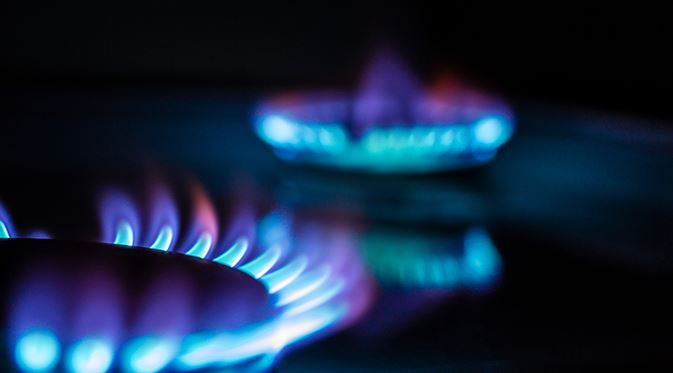The trend of falling gas demand is one that we at the Institute for Energy Economics and Financial Analysis (IEEFA) expect to continue as more of the energy system electrifies, and as batteries provide more competition to gas-fired power plants for providing firming power to the increasing share of renewable energy providing electricity.
Yet the long-held dominant narrative is that eastern Australia is facing gas shortages and that we need new gas supply. This was perpetuated over the years by the gas industry body Australian Energy Producers AEP and the regular reports from the Australian Competition and Consumer Commission (ACCC) and the Australian Energy Market Operator (AEMO). Although no gas shortage has eventuated.
However, the market sentiment may be changing. The last two ACCC reports through its long-running gas inquiry have concluded that there will be a gas surplus in eastern Australia this calendar year. The latest gas data from AEMO’s Quarterly Energy Dynamics Q4 2023 report showed that the 16% fall in domestic demand equated to an 11 PJ decline to 57.5 PJ in the December quarter. This means that domestic demand comprises an even smaller part of the total eastern Australia demand with gas feedstock for the three LNG export plants at Gladstone, Queensland accounting for 83% of total demand.
So, talk of domestic shortages have nothing to do with a shortage of gas. It is a shortage of adequate provisions for secure domestic supply.
The remaining 3.8% of eastern Australia demand is gas used for power generation, which dropped by 5% in the latest quarter to 16.8 PJ from 17.8 PJ a year earlier. This decline counters another narrative of gas producers is that gas is a transition fuel to back up renewables whereas the market is saying something different.
AEMO gave a brief summary of the weaker gas demand, saying that in the domestic market there were large falls in demand from AEMO markets (-11 PJ) (this is residential, commercial and industrial demand), and a small decrease in gas-fired generation (-1 PJ). All markets experienced lower demand, with the largest decrease of 5PJ in Victoria’s declared wholesale gas market (DWGM) due to warmer temperatures combined with lower commercial and industrial demand.
In Brisbane, volumes recorded a decrease of 4.5 PJ, primarily due to the shutdown of Incitec Pivot’s Gibson Island facility in January 2023. Obviously, it is unfortunate that some of Australia’s manufacturing capacity is due to the inability to secure reasonable energy prices.
IEEFA is of the view that more can be done on the demand side. The Victorian and Australian Capital Territory (ACT) governments have embarked on this part of the energy equation, which until now has been dominated by supply side debate. In 2022, the Victorian government released its first Gas Substitution Roadmap (GSR) – a first step in planning the transition away from fossil gas.
The roadmap signalled the Victorian government’s recognition that electrification is a cost-effective decarbonisation option for households. Nevertheless, despite these initiatives there are still forecasts of gas shortage by the end of the decade, largely due to the decline in supplies from the Gippsland basin offshore Victoria.
In AEMO’s 2023 Gas Statement of Opportunities (GSOO), it forecast that southern regions could face annual shortages of domestic gas supply as early as 2027. They forecast a cumulative 1,389 PJ of supply from 2027-2042 that is unsecured.
This estimate is based on AEMO’s Orchestrated Step Change scenario, which assumes investments in electrification increase at a pace beyond current levels. If such an increase does not eventuate, residential fossil gas demand could be much higher – as seen in AEMO’s No Electrification sensitivity.
However, if all household gas appliances were converted to electric at end of life, the cumulative gas supply shortage is greatly reduced, to just over 1,000 PJ (or around 66 PJ a year). This is 53% lower than in No electrification, and 22% lower than in Orchestrated Step Change. It also delays the onset of the annual supply gap, with the first material gap not observed until 2029 or two years after AEMO currently sees the shortages emerge.
The views and opinions expressed in this article are the author’s own, and do not necessarily reflect those held by pv magazine.
This content is protected by copyright and may not be reused. If you want to cooperate with us and would like to reuse some of our content, please contact: editors@pv-magazine.com.








By submitting this form you agree to pv magazine using your data for the purposes of publishing your comment.
Your personal data will only be disclosed or otherwise transmitted to third parties for the purposes of spam filtering or if this is necessary for technical maintenance of the website. Any other transfer to third parties will not take place unless this is justified on the basis of applicable data protection regulations or if pv magazine is legally obliged to do so.
You may revoke this consent at any time with effect for the future, in which case your personal data will be deleted immediately. Otherwise, your data will be deleted if pv magazine has processed your request or the purpose of data storage is fulfilled.
Further information on data privacy can be found in our Data Protection Policy.